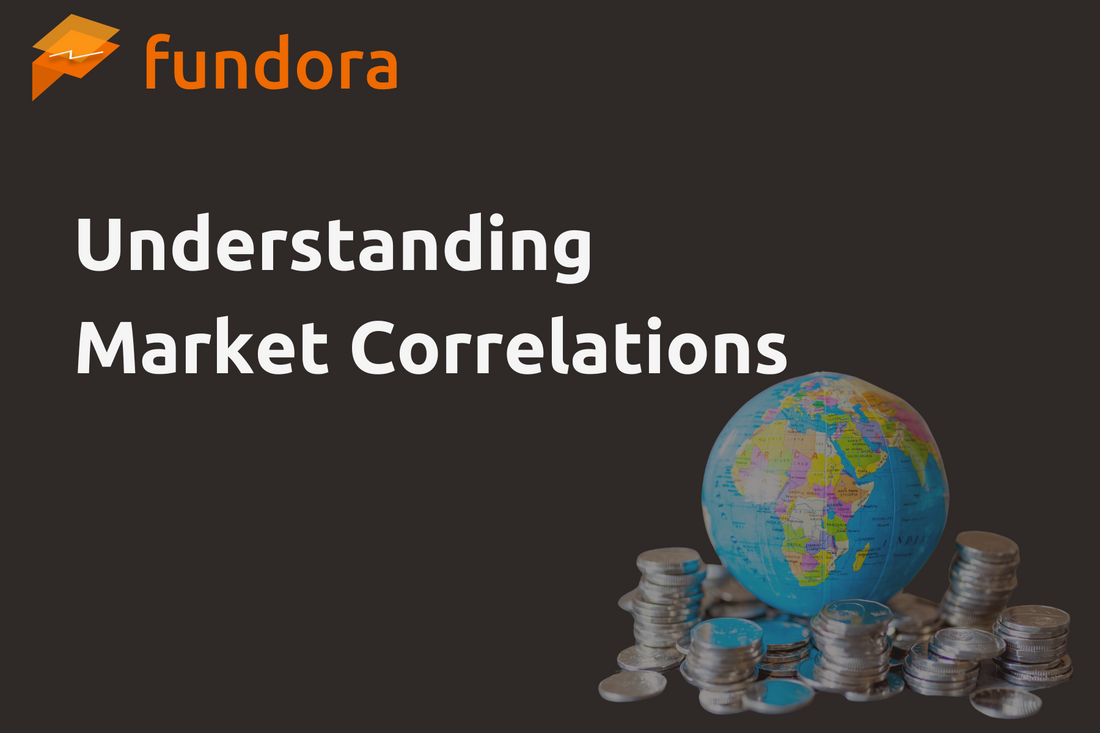
Understanding Market Correlations
Share
Understand Market Correlation: The Essence of Asset Diversification and Risk Management Wisdom
Table of Contents
2-1. Calculating Correlation Coefficient
2-2. Analyzing Historical Data
3. Factors Affecting Correlation
4. Impact of Correlation on Trading Strategy
5. Summary: How to Master Correlation as a Professional Trader
In financial markets, multiple asset classes influence each other through correlation or inverse correlation.
Understanding this correlation is indispensable for traders to effectively control risk and build sustainable profits.
Especially in exam-based prop firms, the concept of asset diversification and the utilization of correlation also affect trading evaluation. In this article, we will practically explain correlation from the basics to its application.
1. What is Correlation?
Correlation is a concept that indicates how similarly (or inversely) two assets move.
- Positive Correlation: Tendency for one asset to rise if the other rises
- Negative Correlation: Tendency for one to fall if the other rises
As an example,Gold and the US Dollar are known for their inverse correlation. In phases where Gold rises, the Dollar tends to fall, and utilizing this allows for strategic asset allocation.
However, correlation is not fixed and changes depending on market conditions and external factors. requiring continuous updated analysis.
2. How to Analyze Correlation
The following five methods are used to understand correlation.
1. Calculating Correlation Coefficient
Basic method for knowing numerical correlation.
- +1: Perfect positive correlation
- 0: No correlation
- −1: Perfect negative correlation
2. Analyzing Historical Data
By comparing historical charts, you can visually understand the movement patterns between assets.
3. Creating Scatter Plots

A method that plots the price movements of two assets to see if a linear relationship is observed.
4. Regression Analysis
Measures how the price of one asset affects the other using a mathematical model.
5. Portfolio Simulation
Allows evaluation of risk and return when combining multiple assets, in a form close to actual trading strategies.
3. Factors Affecting Correlation
There are various market factors behind the emergence of correlation.
1. Market Environment
Macroeconomic indicators such as interest rates, GDP growth rate, and inflation can cause relationships between assets to fluctuate.
2. Sector and Industry Trends
For example, dynamics between industries that are inversely correlated, such as electric vehicle-related stocks and crude oil prices, also exist.
3. Investor Sentiment
When the market is unstable, the correlation structure can temporarily change due to the concentration of funds into safe-haven assets.
4. Geopolitical Risk
International events such as war, political instability, and sanctions can simultaneously affect multiple markets.
5. Liquidity
In emerging markets and minor currencies low liquidity can lead to correlation instability.
4. Impact of Correlation on Trading Strategy
In exam-based prop firms and funded trading evaluation programs, a strong understanding of correlation is required for designing trading strategies.
Risk of Taking Multiple Positions Without Understanding Correlation
Example: If you simultaneously take short positions in USDJPY and EURUSD, and overlook the general inverse correlation between the two currency pairs (where the US Dollar is common and affects them in opposite directions), you may unintentionally concentrate risk, potentially leading to enlarged losses on one side.
What You Can Do by Utilizing Correlation
- Risk Avoidance and Diversification: Combine assets that are unlikely to move in the same direction to curb drawdowns
- Building Hedging Strategies: Maintain overall balance by taking positions in assets inversely correlated with holdings
- Grasping Overall Market Momentum: Visualize risk-on/off flows based on correlation between currency pairs and stock indices
Thus, correlation is not just statistical data, but a practical strategy building tool.
5. Summary: How to Master Correlation as a Professional Trader
Understanding correlation is directly linked not only to "the ability to read the market" but also to "the ability to protect capital."
What prop firms particularly seek are "traders who can make comprehensive judgments from multiple indicators without being swayed by emotions."
Based on the points introduced in this article:
- Always be sensitive to market changes
- Recognize that correlation is "dynamic," not fixed
- Be able to design positions utilizing correlation for risk diversification
Such an attitude is precisely the condition for traders who are entrusted with capital as professionals.
In future trading, consistently asking "What is the correlation between this position and other assets?" and making logical judgments will be the first step towards stabilizing results.
